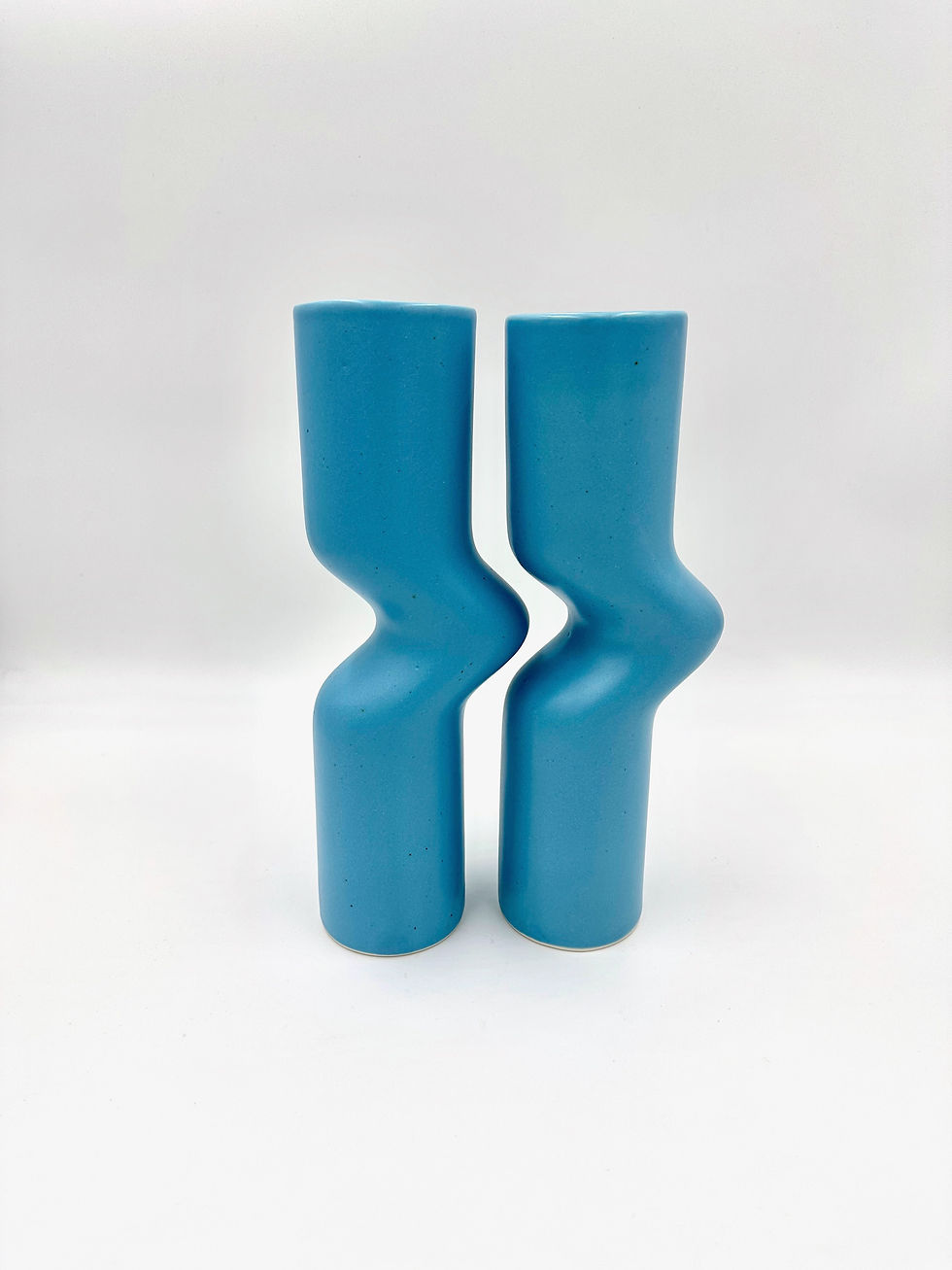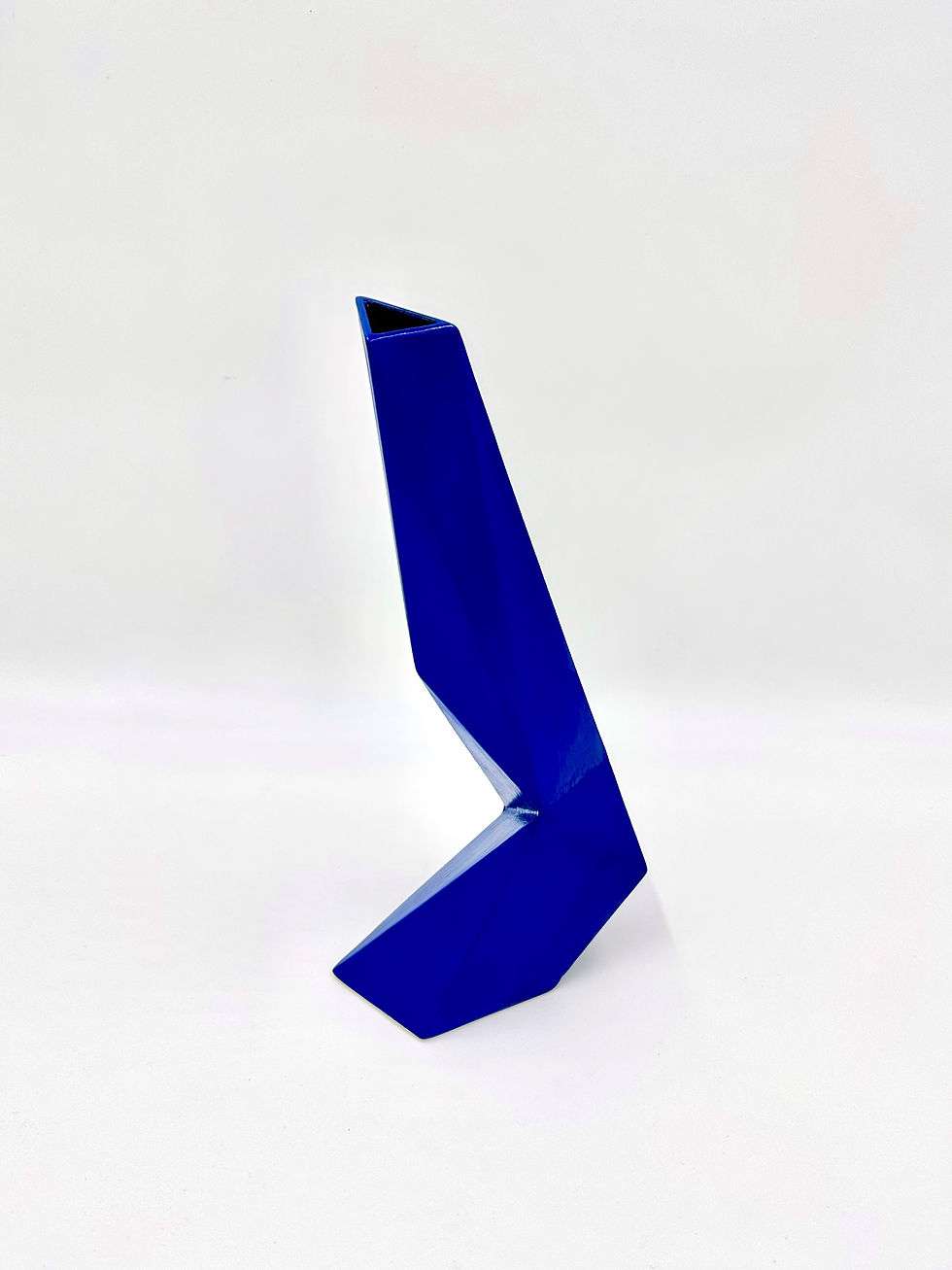
Jungle Gym
New Ceramics by Brooks Oliver
October 13 - 31, 2023
Explore the intricate and astounding Ceramic shapes of Brooks Oliver's Jungle Gym! Ceramicist and University of North Texas professor Brooks Oliver is known for his innovative pottery and is collected by Ikebana fans worldwide…See his latest creations exclusively during his show at Rubine Red Gallery.
Read an Essay by Nick DeFord about Brooks Oliver's work HERE.
Essay on Brooks Oliver's Work, by Nick DeFord,
Program Director, Arrowmont School of Arts and Crafts
“Magic has but one dogma, namely, that the seen is the measure of the unseen."
- W. Somerset Maugham, from The Magician (1926)
“I eliminate my hand from being seen in the work.”
- Brooks Oliver, on his ceramic process
When he was growing up, Brooks Oliver’s parents owned a toy shop, and as a young child, Brooks spent weekends there, particularly gravitating toward the magic section and perfecting illusions and sleight of hand. While his talents appear to have shifted to ceramics in the years since, that is also an illusion. Brooks, at heart, is still a magician. He still speaks to creating wonder through his colors, surfaces and forms. His meticulous process of developing his sculptures and vessels takes an exquisite knowledge of the process of design, ceramic mold making and casting, but at the same time, we as the audience never see that hand at work - only the flourish of the final bouquet.
Also, in a strictly literal sense, he is still a practicing magician. He claims to never go anywhere without balloons on his person for making balloon animals. “You’d be surprised at how often it comes in handy,” Brooks mentions off-hand, “it’s also the best bar trick.” At first glance, both Brooks’ ceramic vases and balloon animals have much formally in common. They are both twisty and evocative, curvy and cartoonish, and most of all completely covered in color. But even beyond the surface and form, they share common utilitarian ground: they are both containers. Brooks’ final sculptures are vases, thus vessels to hold flowers. Balloon animals, as containers, are less obvious. But after all, the latex skin of balloon animals is just the outside casing that carefully holds something within: they are vessels of the maker’s breath.
Stop. Right there. Did you see it? Watch it again, but more closely. There. That was Brooks’ sleight of hand, his misdirection. While we were watching one hand, the other was left unseen. And that unseen hand was doing all the magic, making the switcheroo right before our eyes. We thought the pip was under one shell, when it was actually beneath the other; the King on top of the deck is suddenly now a Queen. In an illusory gesture, Brooks does the same with his artwork, transmogrifying their forms and their purpose. When are we supposed to see the container, and when are we supposed to see the contained? How much does one depend upon the other? While the balloon artist quickly folds and twists, accompanied with playful banter, we keep our eyes on the vessel, willfully ignoring what the vessel actually contains: the life of the maker themselves. And as the customer walks away smiling, they do not yet realize that they are carrying away the breath of the artist all neatly contained in a fragile curving animal form, and all hidden in plain sight.
With Brooks’ ceramic vases, he does the same, but it is a mirror act, a sleight of hand in reverse. It is not the contained that is hidden in plain sight, but now the container itself. A vessel that asks the most important existential question for a utilitarian vase to ask: do I need to hold a flower at all? The balloon animal, in an ironic (and wondrous play on words) twist, cannot actually exist without what it contains. Without breath, the balloon animal is formless and pitiful. Brooks’ work, on the other hand, seems to relish its independence from its collaborator. The vases swirl and dance, bend and shimmy, strut across pedestals and tables and walls. Flowers will only hold them down! Or, perhaps, with another flip of the coin, the flowers are not burdens, but adornment. As we pictured the vases before, to be dancing or strutting like figures, then we should also allow for their decoration of flora to be like corsages, boutineers, or chaplets. The vases are dressing up and ready to go out.
But like any adornment for a person, the beauty was already there to begin with. Their colors and curving lines were always going to be brighter than petals, and more evocative than filaments and pistils. And their presence in a space - whether it’s a gallery or dining room - means that they will never need to go out. Their form and manner brings the audience to them. With the same intriguing declaration spoken from a street magician, they lure the viewer around them: Everyone gather ‘round! Gather ‘round! Would you all like to see a trick?
Written by: Nick DeFord, Program Director, Arrowmont School of Arts and Crafts

















































